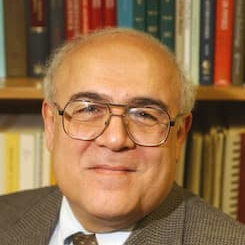Reduced Order Modeling of Fluid Flows
A special issue of Fluids (ISSN 2311-5521).
Deadline for manuscript submissions: closed (15 August 2018) | Viewed by 32718
Special Issue Editors
Interests: fluid mechanics; complex systems; pattern formation; partial differential equations; non-Newtonian fluids; fluid–structure interaction; hydrodynamic stability; non-equilibrium thermodynamics; vortex induced oscillations; rheology; pathological flows; network analysis; philosophy of science; sustainability and science and creativity in mathematics and science
Special Issues, Collections and Topics in MDPI journals
Interests: computational fluid dynamics (CFD); turbulence; multiphase flows; aerosols transport and deposition; respiratory flows; heat and mass transfer
Special Issues, Collections and Topics in MDPI journals
Special Issue Information
Dear Colleagues,
The ever-increasing need for computational efficiency and improved accuracy of many applications in fluids leads to very large-scale dynamical systems, whose simulations and analyses make excessive and unmanageable demands on computational resources. Since the computational cost of traditional full-order numerical simulations is extremely prohibitive, many successful model order reduction approaches have been introduced. The purpose of such approaches is to reduce this computational burden and serve as surrogate models for efficient computational analysis fluid systems, especially in settings where the traditional methods require repeated model evaluations over a large range of parameter values. Simplifying computational complexity of the underlying mathematical model, these reduced order models offer promises in many prediction, identification, design, optimization, and control applications. However, they are neither robust with respect to the parameter changes nor low-cost to handle nonlinear dependence for complex nonlinear dynamical systems with temporal and stochastic parameters. Therefore, reduced order modeling remains an open challenge and the development of efficient and reliable model order reduction techniques is of paramount importance for both fundamental and applied fluid dynamics research. Topics in this call include, but are not limited to: projection-based approaches, reduced subspace or basis generation methods, regularization algorithms, coarse-grained simulations, data-driven methods, compressive or sparse sampling ideas and their implementations for fast predictive modeling, parameter identification, data assimilation, design, control, optimization and uncertainty quantification problems arising in fluid dynamics applications.
Dr. Omer San
Prof. Dr. Goodarz Ahmadi
Guest Editors
Manuscript Submission Information
Manuscripts should be submitted online at www.mdpi.com by registering and logging in to this website. Once you are registered, click here to go to the submission form. Manuscripts can be submitted until the deadline. All submissions that pass pre-check are peer-reviewed. Accepted papers will be published continuously in the journal (as soon as accepted) and will be listed together on the special issue website. Research articles, review articles as well as short communications are invited. For planned papers, a title and short abstract (about 100 words) can be sent to the Editorial Office for announcement on this website.
Submitted manuscripts should not have been published previously, nor be under consideration for publication elsewhere (except conference proceedings papers). All manuscripts are thoroughly refereed through a single-blind peer-review process. A guide for authors and other relevant information for submission of manuscripts is available on the Instructions for Authors page. Fluids is an international peer-reviewed open access monthly journal published by MDPI.
Please visit the Instructions for Authors page before submitting a manuscript. The Article Processing Charge (APC) for publication in this open access journal is 1800 CHF (Swiss Francs). Submitted papers should be well formatted and use good English. Authors may use MDPI's English editing service prior to publication or during author revisions.
Keywords
-
parametric model reduction methods
-
proper orthogonal decomposition
-
dynamic mode decomposition
-
Koopman operators
-
radial basis functions
-
rational interpolation methods
-
empirical interpolation methods
-
manifold interpolation methods
-
balanced truncation
-
closure modeling
-
regularization algorithms
-
scale-aware basis selection
-
Krylov subspace methods
-
Volterra series
-
nonlinear kernel-based methods
-
data-driven methods
-
spatiotemporal patterns extraction
-
predictability quantification
-
non-projection based model reduction
-
machine learning enabled reduced-order models
-
high-dimensional parameter subspace characterization
-
tensor techniques
-
non-intrusive models
-
compressive sensing
-
greedy sampling algorithms
-
reduced-order adaptive flow controller for fluid flows






